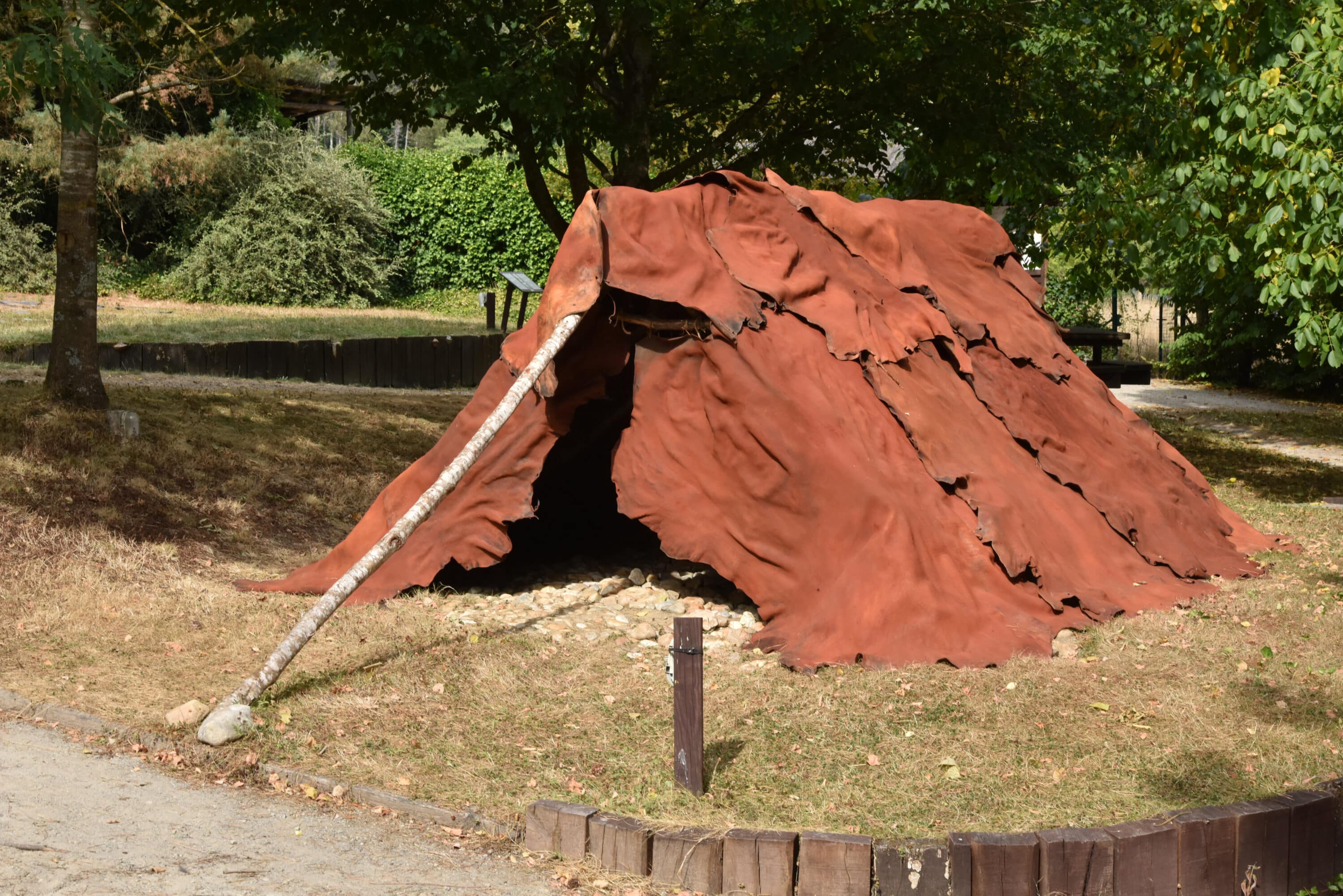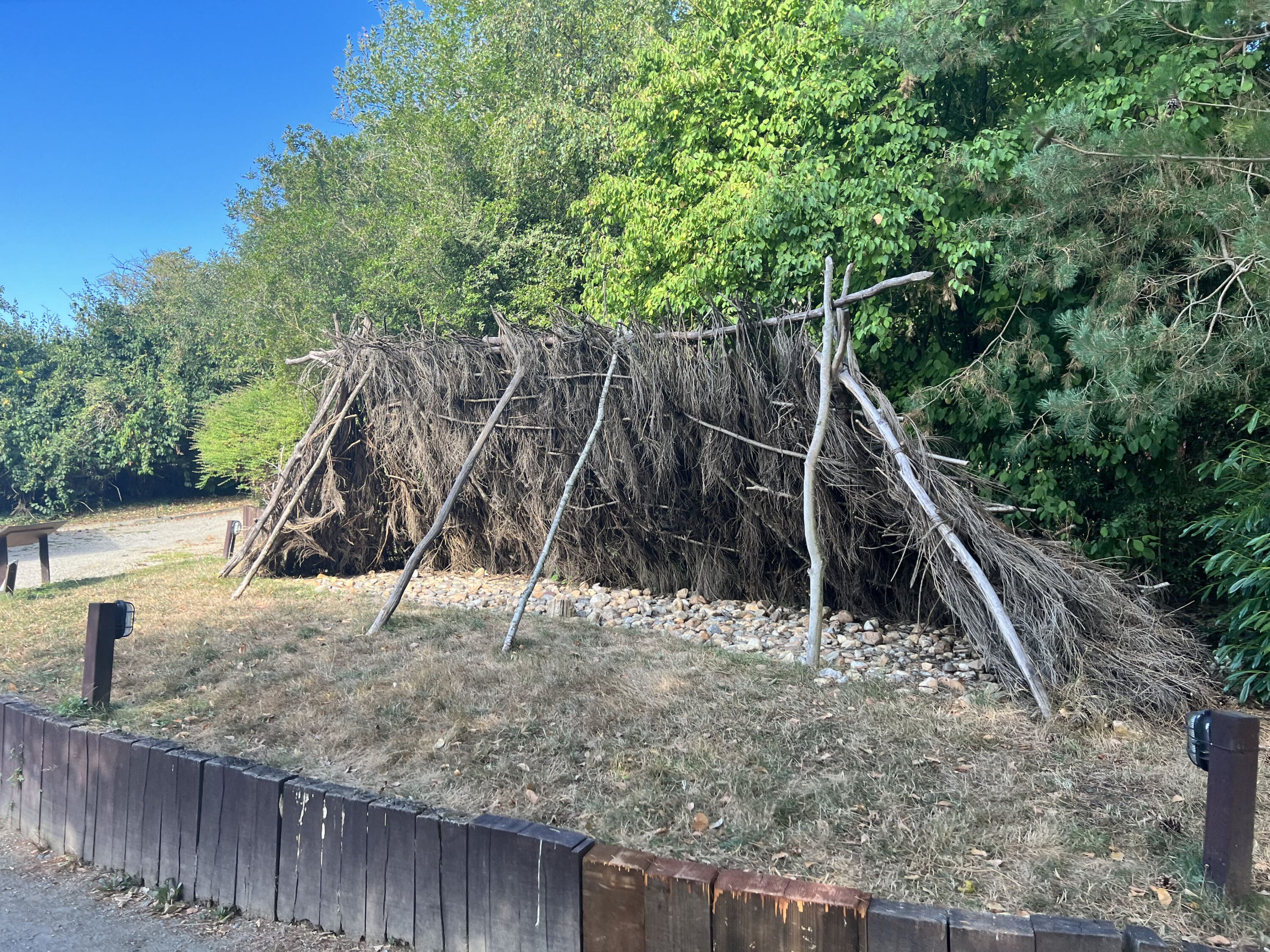Prehistory Park

Vestiges and habitats of the first peoples at the Parc de la Préhistoire
The hunter-gatherer peoples of prehistoric times, whether nomadic or semi-sedentary, left a multitude of remains, including traces of dwellings. These are often difficult to see and interpret. They include wedging stones used to hold a tent cover to the ground, paving, collapsed “walls” and roofs.
It is mainly through an accumulation of objects in a more or less and circumscribed space, sometimes with a heap of remains where the walls were, that we can guess the existence of a prehistoric habitat.
The best-preserved remains allow prehistorians to imagine these early architectures. Their ground plans suggest one or more possible shapes.
By comparing them with ethnographic examples of nomadic or semi-sedentary dwellings from the 19th and 20th centuries, it is then possible to propose reconstructions and imagine the furniture that has disappeared.
Located at the rear of the museumwhat you’ll see in the Prehistory Park should be considered more as evocations than reconstructions: the unknown, and therefore the imaginary, plays a considerable role…
Europe’s first prehistoric settlements
From the first inhabitants of Europe (Homo erectus) to Cro-Magnon man (Homo sapiens), we invite you to discover the dwellings built by these precursors of architecture.
The Parc de la Préhistoire, dedicated to the outdoor constructions of prehistoric hunter-gatherer peoples presents six evocations of Paleolithic habitats. The sites are Pont-de-Lavaud in Eguzon (Indre, 1,200,000 BP), Cerisier (Dordogne, 18,000 BP), Méziritch (Ukraine, 16,000 BP), Plateau Parrain (Dordogne, 15,500 BP), Gönnersdorf (Rhineland, 12,700 BP) and Closeau (Hauts-de-Seine, 12,500 BP).
Over the summer, you may be lucky enough to see our team working on the reconstruction of the Gönnersdorf and Pont de Lavaud habitats. Le Closeau, meanwhile, has already been rebuilt, during the 2016 Archaeology Festival.

